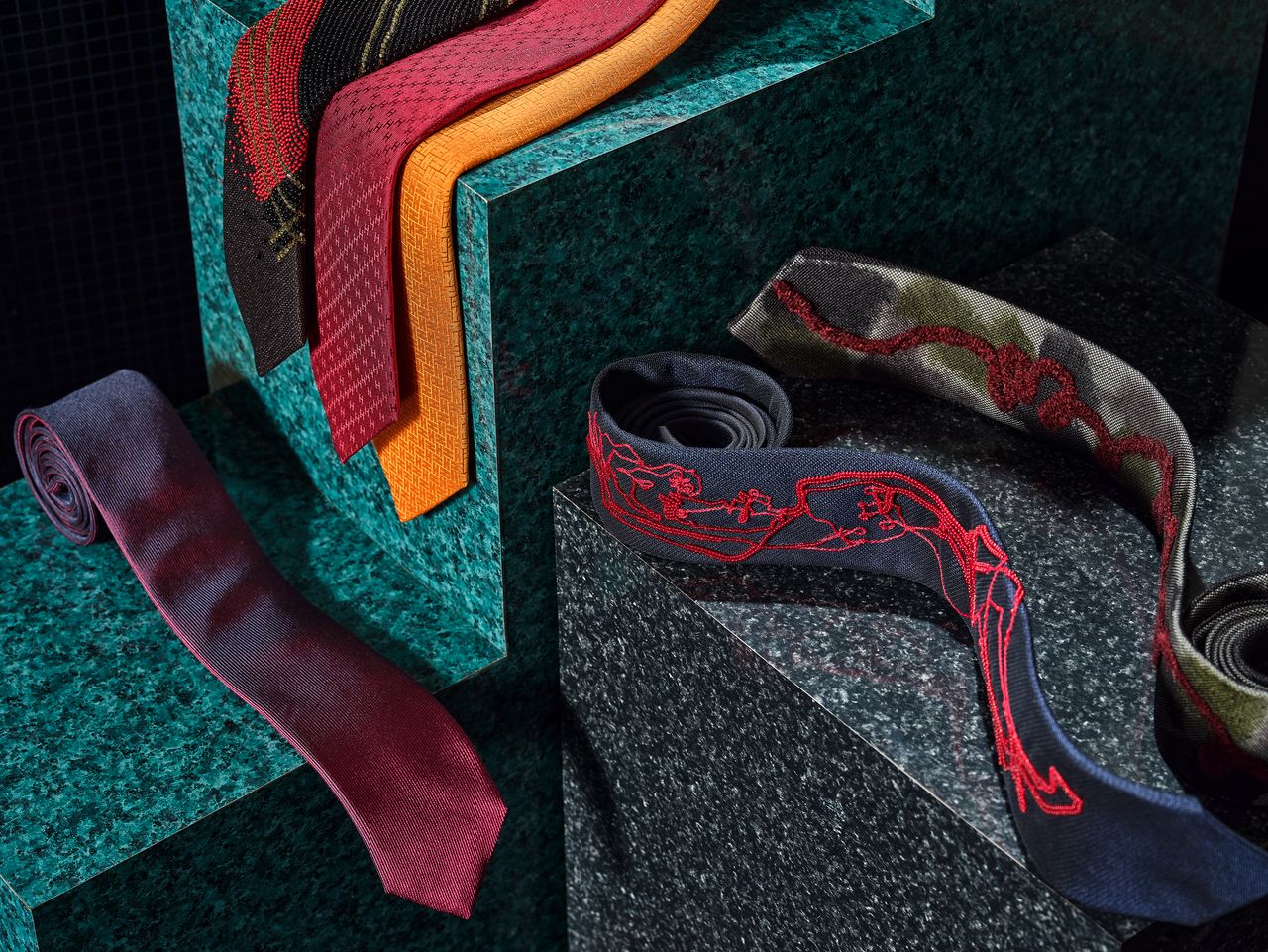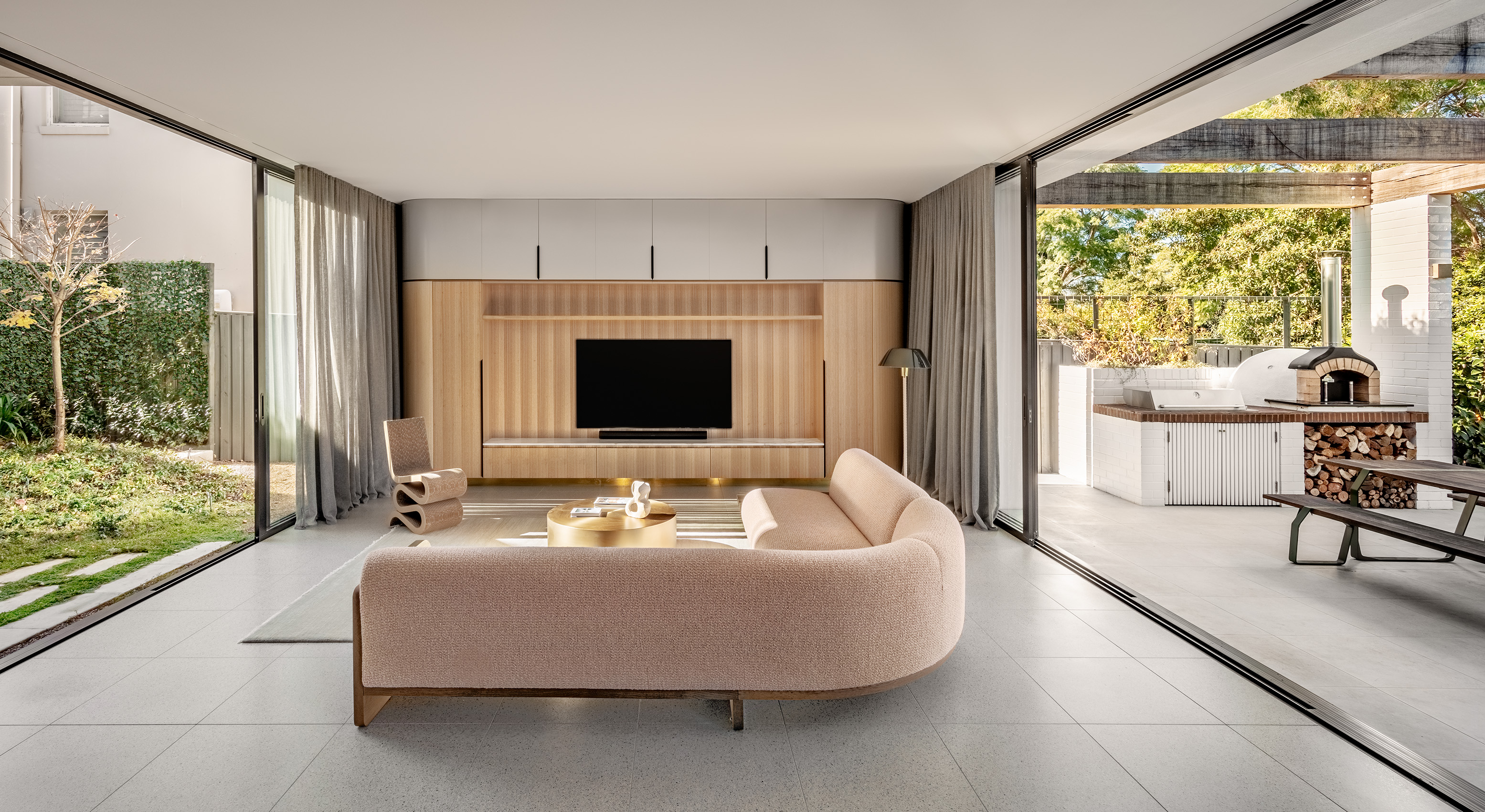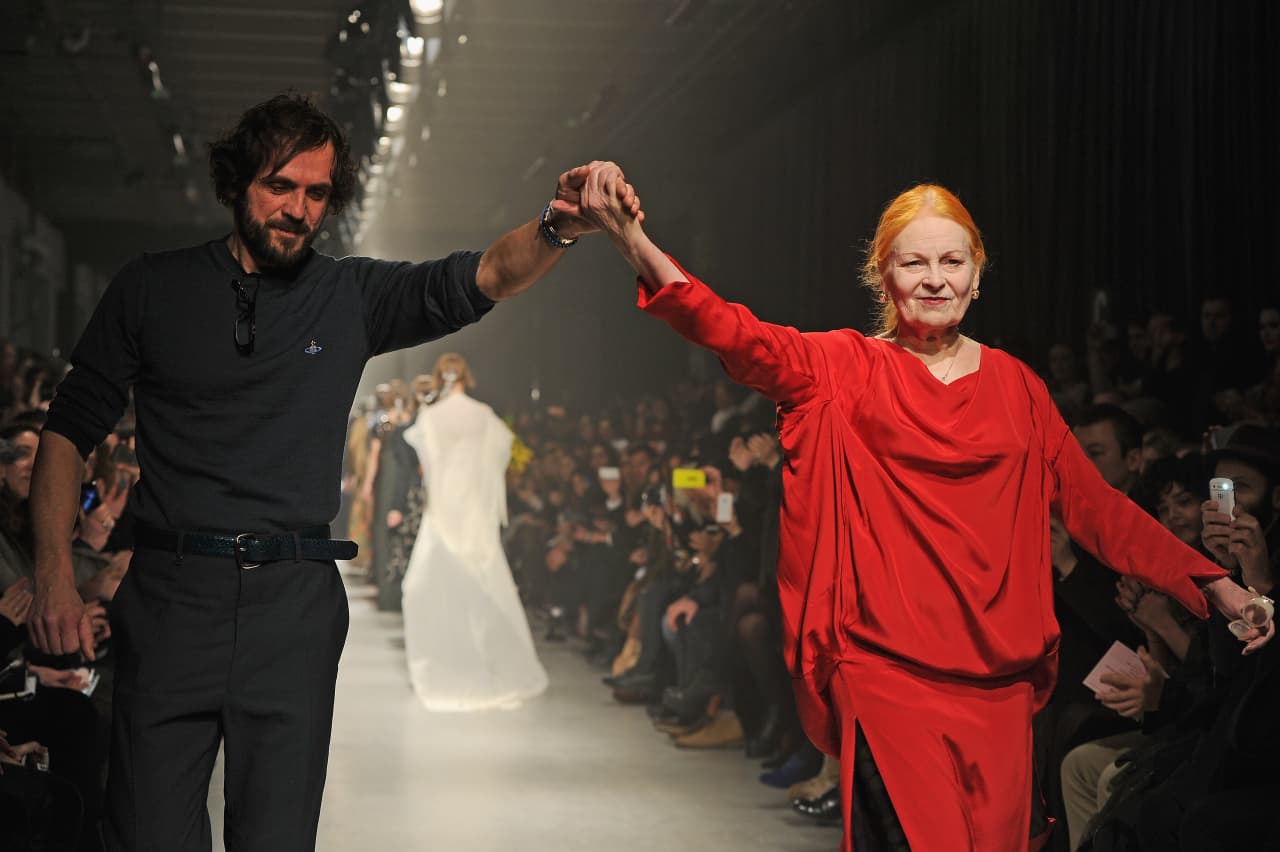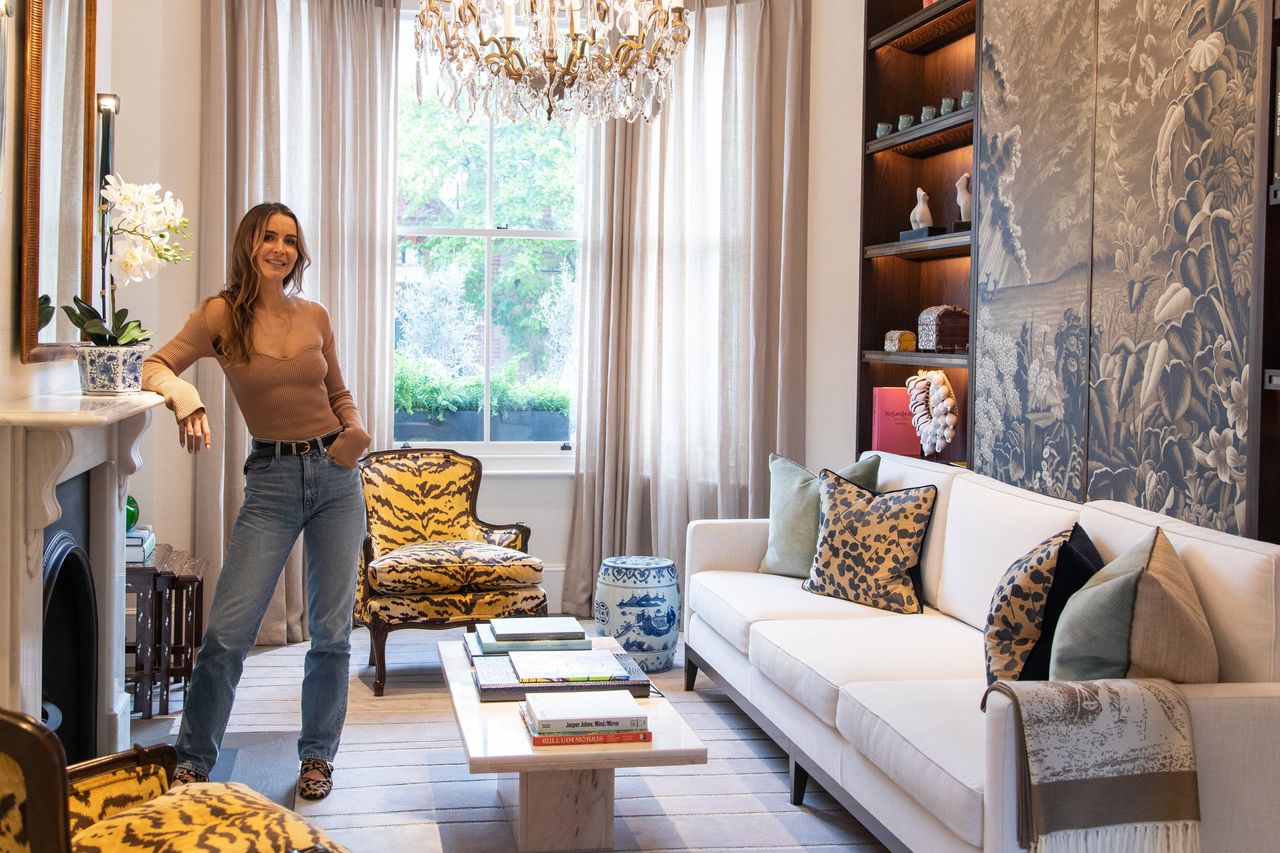Neckties’ New Future
Are boomers the generation that let fashion slide?
“We are the disruptors,” says Joseph DeAcetis, 58, creative director of the fashion blog StyleLujo, “the generation who let fashion go. We just got too lazy to dress well, to tell the truth.”
One early and lamentable casualty is the once taken-for-granted necktie. In a world where grown men now dress like their 12-year-old selves, replacing button-down shirts and wingtips with sneakers, jeans, T-shirts, and ball caps, the necktie is beginning to seem almost quaint, like a wardrobe item from an old movie, maybe Cary Grant old.
It is obviously not on the scale of a global calamity, but ties fading entirely from fashion would have lamentable downsides, partly because they are useful—adding polish and a splash of colour to neutral suits and sport coats—and partly because they are social signposts. For basically the entirety of the 20th century, and in some quarters right up until today, the stodgy old necktie has served as a beacon of what was unironically seen as respectability. Popping up your collar and knotting a tie conveyed a willingness to put yourself to some small trouble to announce yourself as part of society’s common enterprise, an outward sign of keeping yourself shipshape so you could contribute.
This arguably worthy goal may seem mossbacked when every day has become Dress Down Friday. From Steve Jobs’ pathbreaking turtleneck, to the photographs of the pointedly tieless leaders of the Group of Seven wealthy nations at Elmau, Germany, last June, to Sir Richard Branson scissoring ties off people’s shirts, an open collar now beams its own clued-in, future-aligned virtue signal. Even in some traditional business settings, it has become a badge of success not to have to wear a tie.
“A friend of mine just went for an important job interview in New York and I asked him if he wore a tie,” says Karen Alberg Grossman, editor of menswear trade publication MR Magazine. The guy said nope, he didn’t: “I was there for them to kiss up to me, not me to kiss up to them.”
Amid all this, tie makers might have to squint hard to locate any green shoots. But on the other hand, fashion trends are notoriously fickle. “The state of the tie market has been dismal,” Grossman says, “but there is a notable return to dress-up in menswear right now. I’m not sure I’d call it a comeback, but we will see more ties being sold in 2023 than 2022.”
Anne-Marie Colban, co-owner of Paris’ venerable Charvet, agrees. “We have been happily surprised since the Covid lockdown to see sartorial elegance make a strong comeback. And the desire to wear ties has come back along with it.”
But tie-wearing has come back changed, as Colban acknowledges. “Men wear ties for pleasure now, not because of social conventions,” she says. “A tie is an ornamental piece and an expression of refinement, not a constraint.”
It is a note you hear sounded elsewhere around the industry. There is a feeling—a hope, anyway—that neckties may be entering a new era of creativity and securing a smaller but vibrant niche as items of self-expression.
It is a bet Jonathan Meizler went all-in on 11 years ago. His Orchard Street atelier on New York’s Lower East Side, called Title of Work, handcrafts striking and outré ties at prices ranging from around $275 to $1,000. Incorporating elements like rattlesnake vertebrae, gauzy veils, hand-painting, and fine beadwork, they are, says Meizler, “a blending of the worlds of art and couture on a 58-inch by 2½-inch canvas.”
They are definitely not for everyone or for most daily occasions, nor does Meizler intend them to be. But what Title of Work’s works might be instead is the cutting edge of neckwear’s new direction. “As a symbol of masculine power, ties have fallen away,” Meizler says. “But as an avenue for defining yourself and your style, there is plenty of room for that.”
That avenue also looks promising to more mainstream luxury clothiers. “Nowadays, men wear ties because they want to, not because they have to,” explains Christophe Goineau, creative director of men’s silk for Hermès. “This has liberated the creative process considerably and invited reinvention: We can create a tie in grenadine silk, add a tufted horse head or a shower of embroidered motifs.”
“All the rules we knew have been abandoned,” Goineau adds. “The tie has become an easygoing and liberated fashion accessory.”
Sidebar:
NOT YOUR GRANDPA’S NECKTIE
Today’s tie designers get creative with pattern and color
(1) Title of Work’s Plaid Beaded Necktie 1005
A deconstructed plaid pattern, intricate and asymmetrical, is hand-beaded and embroidered on tulle overlay. (US$800)
(2) Hermès’ 7 Faconnee New H tie in raisin
The 7 Faconnee New H is hand-sewn 100% silk twill. A series of infinite “H”s are revealed in the jacquard weave of this tie. Made in France. (US$215)
(3) Hermès’ Faconnee H 24 in orange
Hermès employs jacquard weaving to repeat the brand’s iconic “H” letters in this refined-casual hand-sewn, 100% silk twill tie. (US$215)
(4) Title of Work’s Standing Woman 1079
This free-form line drawing of a woman is hand- embroidered on tulle overlay. (US$500)
(5) Title of Work’s Line Gradient Necktie 075
This navy to burgundy gradient creates an ombré effect on this custom-woven silk twill tie. (US$225)
This article appears in the March 2023 issue of Penta magazine.
 Copyright 2020, Dow Jones & Company, Inc. All Rights Reserved Worldwide. LEARN MORE
Copyright 2020, Dow Jones & Company, Inc. All Rights Reserved Worldwide. LEARN MORE
This stylish family home combines a classic palette and finishes with a flexible floorplan
Just 55 minutes from Sydney, make this your creative getaway located in the majestic Hawkesbury region.
Futureproof your home and maximise your return with design directions that focus on contemporary ways of living
Looking to build, or renovate, a home in 2024? You’re not alone. According to a recent study from Resolve Finance, over a third of Australian homeowners are planning to renovate their current properties in the next 12 months. And if the Federal Government achieves its ambitious goal of delivering 1.2 million new dwellings over the next five years, there will be many new home owners looking to build their dream home in 2024 and beyond.
But before tackling such a behemoth task, considering all the latest—and future—architectural trends is pivotal in your new build’s success. Award-winning architect and interior designer, Georgina Wilson said sustainability will be at the forefront for many interested in energy efficiency and saving money on power bills.
“Elements of passive design are moving into the mainstream. Improvements in the technology with double glazing, building wrapping and insulation are meaning that more people have access to these materials,” Ms Wilson said. “Solar has proven itself and homeowners are now looking for other ways to make their home more efficient.”
The following eight trends reflect a growing emphasis on sustainability, flexibility, and wellbeing in residential architecture, catering to the evolving needs and preferences of homeowners in 2024.
—
1). Consider your colour palette
The colours you use say everything about the type of spaces you want to foster, whether they be bright and warm, dark and moody, neutral — the list goes on. If we’re looking to trends, earthy, calming neutrals are in — think brown, beige and eucalyptus green. Colours that feel natural and soft, but welcoming provide an inviting environment that’s easy to live with.
However, interior designer and stylist, Jono Fleming said contrast is important to create interest and one of the most powerful ways to do this is through colour.
“It doesn’t have to be a big splash of colour, it could be introduced through smaller decorative objects, a statement furniture piece or an artwork, but the colour should add balance to the space,” he said.
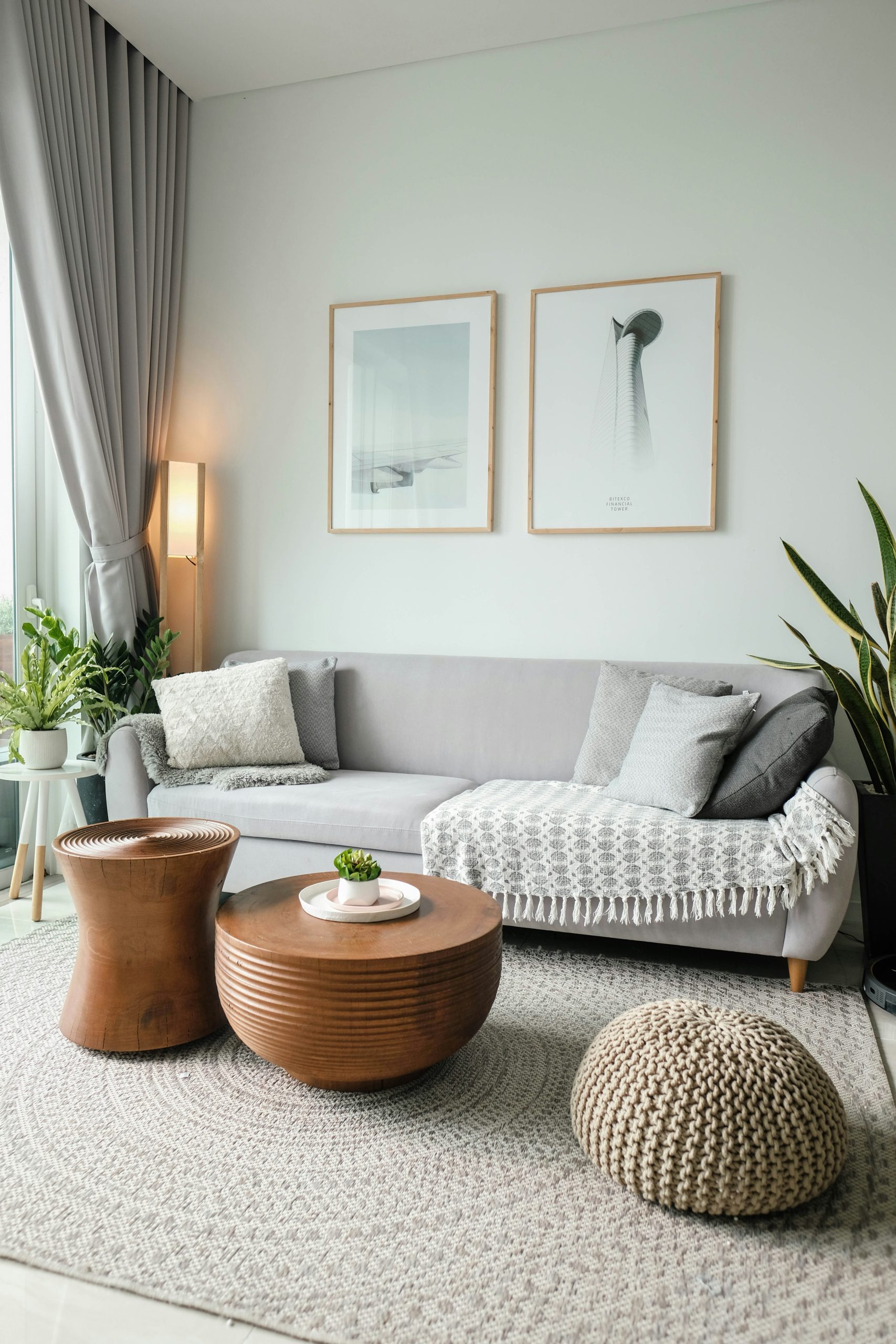
2). Modern, outdoor living areas
Ever since the COVID pandemic and subsequent lockdowns, expanding living spaces to the outdoors has gained in popularity. Features like plant-filled front porches, outdoor kitchens, fire pits, and cosy seating areas create inviting spaces for relaxation and entertainment for all family members.
“There has definitely been a greater appreciation for outdoor living spaces since COVID,” said Ms Wilson. “Outdoor fabrics and mechanisms for shading have greatly improved in recent years allowing people to fully embrace seamless indoor/outdoor living.”
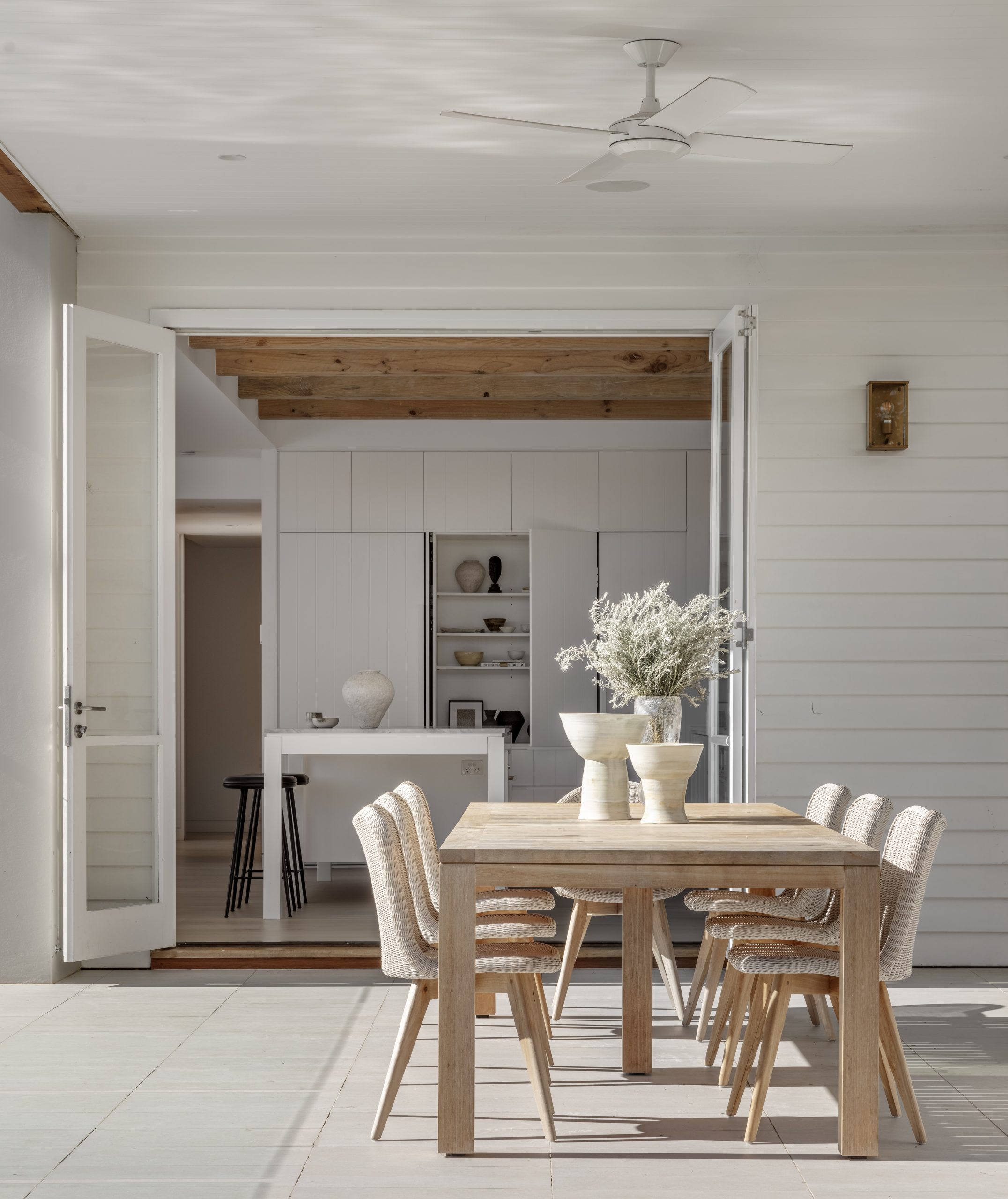
3). The integration of smart technology
Integrating smart home technology throughout your home continues to gain traction with homeowners. As we increasingly look to rely on technology to make our lives all the more seamless, smart technology throughout allows homeowners to control a variety of tasks and zones remotely, enhancing convenience, security, and even energy efficiency. This can include controlled heating and cooling from your phone, automatic lightning, voice control commands, and more.
“The technology for seamless appliances has come a long way. At Salone del Mobile Milano this year, we experienced the new Gaggenau fully integrated induction bench top, which in terms of kitchen design, is a huge advancement,” said Ms Wilson.
Gaggenau, the German manufacturer of high-end home appliances, is at the forefront of smart home technology, paving the way for intelligent cooking appliances that learn and adapt to user preferences. Gaggenau’s essential induction cooktop, the functional and seamless cooking surface Ms Wilson speaks of (pictured below), is designed to be “seamlessly integrated into a kitchen’s worktop”.
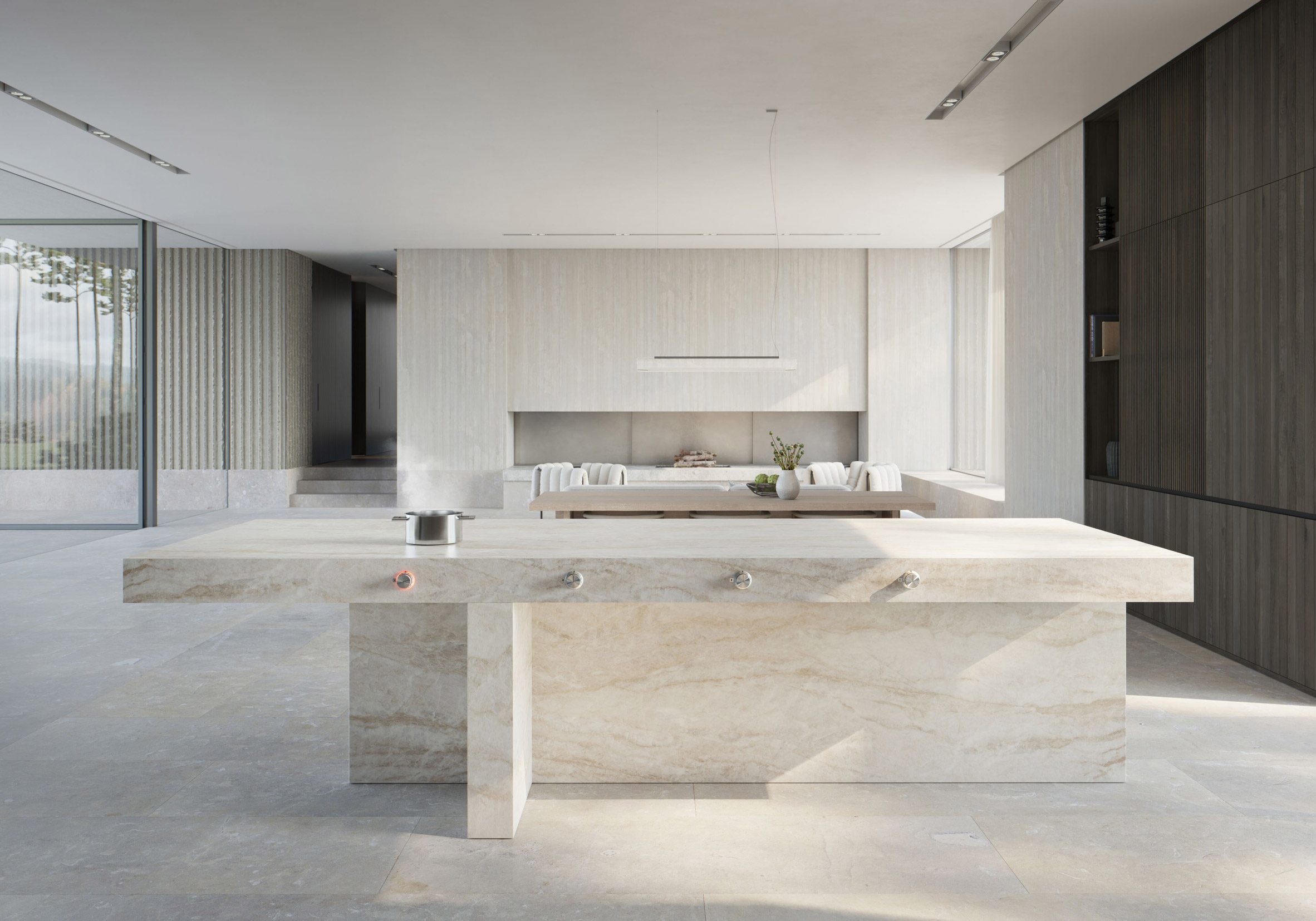
4). Health and wellness features
Prioritising health and wellness in 2024 is paramount, and home design that can include features like air purification systems, dedicated exercise spaces, recovering hubs—like saunas and ice baths—and relaxation areas to support physical and mental wellbeing will go a long way in not only adding value to your home, but providing a space that is architecturally on-trend and with the times.
“I’m seeing a lot of demand for in-built saunas, both traditional and infrared, particularly in the homes of our US clients,” said Ms Wilson.
“Bathroom suppliers such as Kohler, Duravit and Toto are offering increasingly sophisticated products that incorporate an almost spa-like experience in your at home bathroom. Examples of this are fantastic multi-nozzle showers and steam showers, Japanese toilets incorporating bidet technology, and elegant and serene bathroom furniture that can be fully customised for clients.”
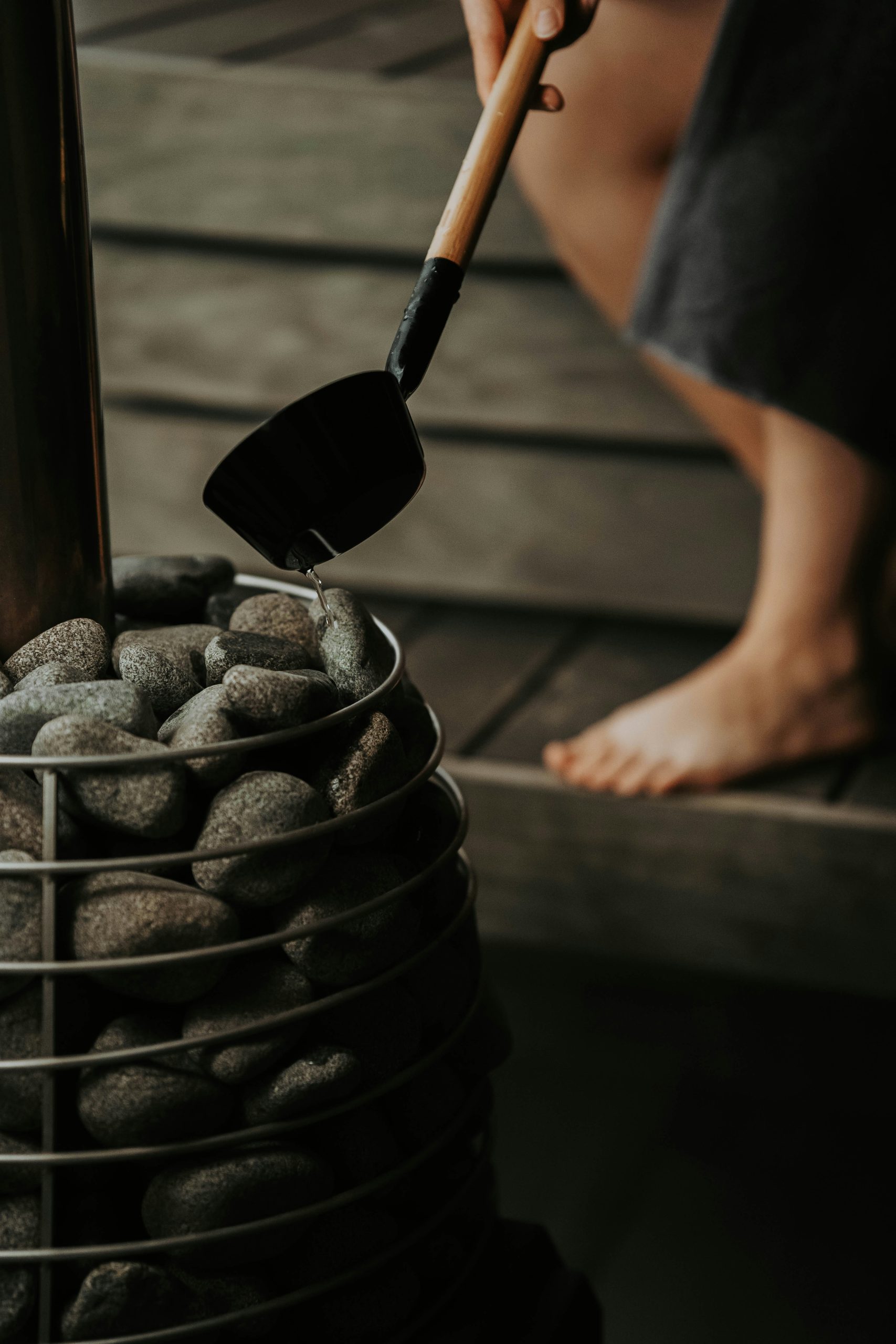
5). Sustainability is key
A common goal among homeowners and future buyers alike is to own a property that is flexible enough grow with them. Futureproofing your home with sustainable measures will not only ensure its longevity, but it will help homeowners to play their part in addressing their carbon footprint.
“The current cost of living crisis is leading to a lot more multigenerational living, meaning families are prioritising durable materials and sustainable power sources, like solar,” said Ms Wilson.
Consider adding solar panels to your home, utilising sustainable materials in any upcoming renovations or builds, like recycled timber, and utilising energy-efficient lighting throughout your home.
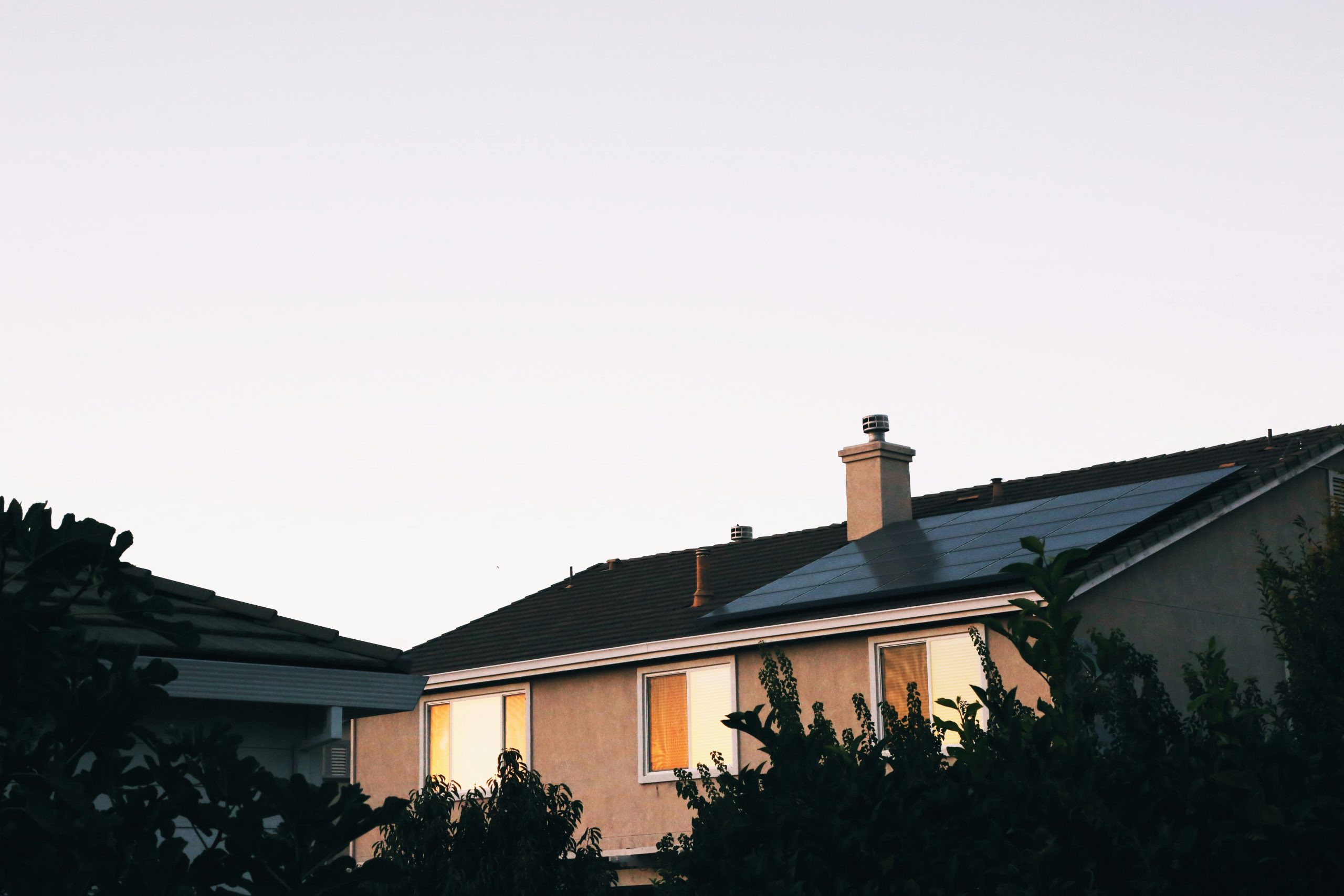
6). Minimalist design
Do as the Scandinavians do – introduce minimalist design into your home. Embrace simplicity and clean lines with a focus on interior design. Decluttering in main living spaces is surprisingly effective. Adopting the approach of ‘Swedish Death Cleaning’, which essentially involves slowly ridding your house of unwanted or unused items once you reach the other side of 50, will also help you whittle your possessions down to the beautiful and the necessary.
Minimalist design in home appliances is also making a resurgence in 2024 according to Ms Wilson.
“What I’ve been interested to see at Salone del Mobile Milano in 2024 is a huge return to stainless steel finishes, and more and more seamless integration of appliances,” said Ms Wilson.
“We’re seeing timeless materials in reimagined applications: copper baths and stainless steel basins are emerging trends with the potential to be timeless. These materials are so practical, and pair beautifully with natural stone and timbers.”
Above all, maximising different spaces through efficient and effective storage options will also do wonders in achieving that minimal aesthetic.
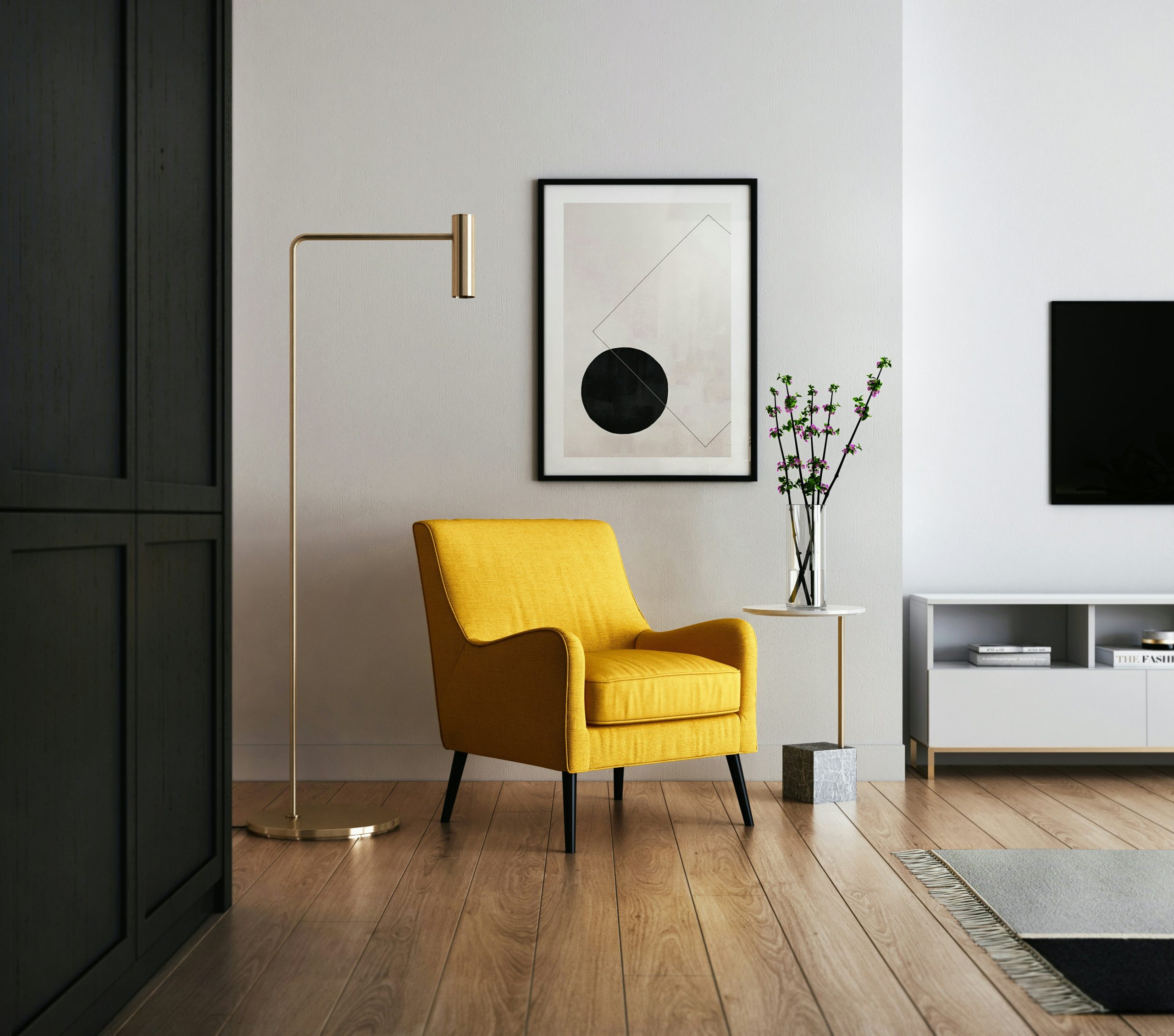
7). Multifunctional spaces
As we move towards greater efficiency of space, it’s useful to consider multifunctional spaces throughout your home. In 2024, we are seeing more homes incorporate multifunctional spaces and trends. This includes using multifunctional furniture in main bedrooms or living spaces—furniture that can act as storage ottomans or convertible sofa beds—as well as transforming wasted space, and open up indoor to outdoor living.
“Multifunctional spaces in homes are a great idea. Particularly in small homes, it makes a lot of sense to achieve maximum value out of the limited space available. The way you use a space can change as your family evolves over time, so it’s always good to design in such a way that allows for flexibility,” said Ms Wilson.
“Make sure that the functions you allocate to a single room are compatible with the space available and each other. For example, it works really well to combine a living room, a dining room and a kitchen in one open plan space because these are all public, lively spaces. It doesn’t work very well to combine, say a study, with these spaces because you will want control over the visual and acoustic privacy in a study.”

8). Think about biophilic design
A buzz word among architects and interior designers, biophilic design is one of the strongest trends in 2024 thanks to its benefits in garnering a sense of harmony and connection between your home and the environment. Consider incorporating natural elements into home design, such as large windows to maximise natural light, indoor gardens, and natural materials like wood and stone.
“Biophilic design is a timeless principle, in that home design should connect people in a positive way with their natural environment by maximising access to, and the ability to control, natural light and ventilation, which really helps to create an enjoyable (and healthier) environment to live in,” said Ms Wilson.
“Increasingly, there is a demand for this positive relationship to the natural environment; by leaning on the principles of biophilic design, you can create a haven and retreat at home that can help with the daily stresses of life.”
Ways to foster that indoor-outdoor connection can be through the addition of smaller internal courtyard spaces filled with greenery, or incorporating indoor plants and adding greenery into different rooms throughout your home.
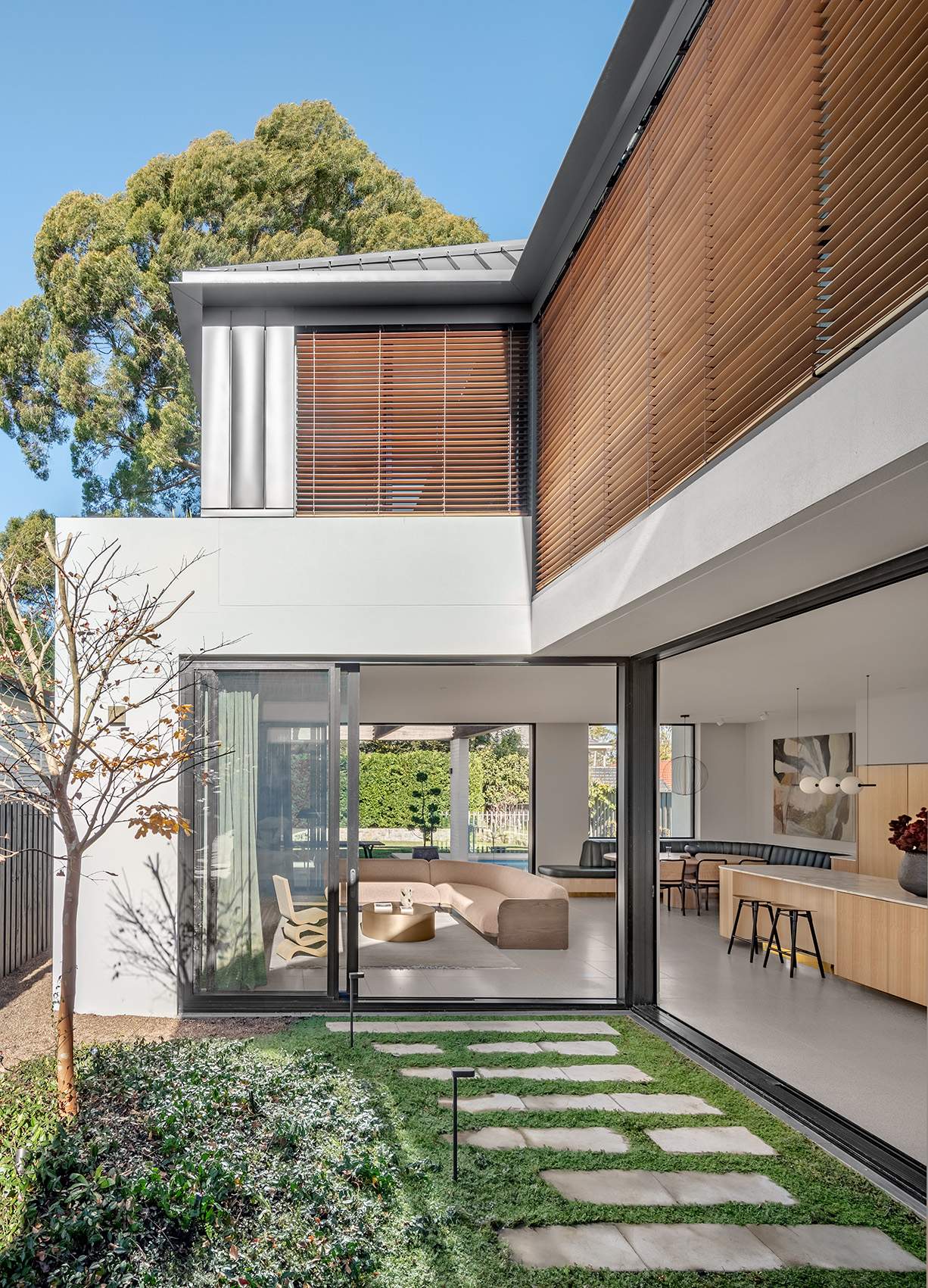
—
This stylish family home combines a classic palette and finishes with a flexible floorplan
Consumers are going to gravitate toward applications powered by the buzzy new technology, analyst Michael Wolf predicts









